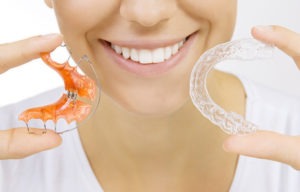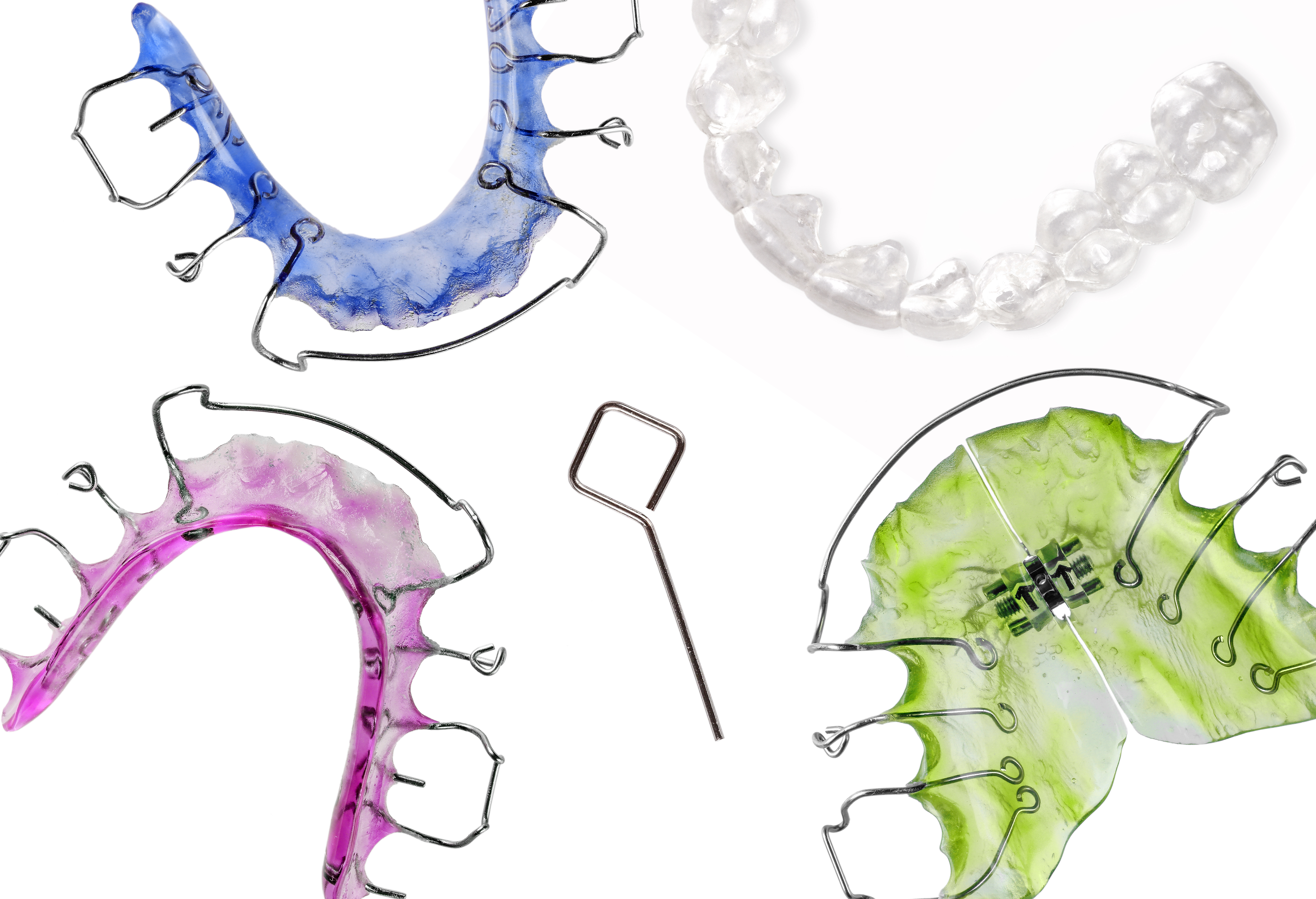Is there a more exciting day than the day you get your braces off? You finally get to enjoy all those previously forbidden foods, and you finally get to see your gorgeous smile! While it is easy to get caught up in the excitement, you do need to remember that you aren’t quite done yet.
Not so long ago, it was believed that once someone had his or her braces were removed, he or she would have a lifetime of straight teeth forever. Over the last few decades, however, it’s been shown there is not just one way to move teeth to guarantee a lasting result. As we age, our teeth naturally move to accommodate life’s many changes, whether you’ve had orthodontic care or not. It takes regular maintenance to keep your teeth straight.
At Dudley Smiles, we want you to know just how important it is to consistently wear your retainer once your braces are removed. Wearing a retainer ensures your teeth stay put long after your braces have come off!
Education is everything, so let’s look at the two different ways teeth can move after orthodontic treatment.
Two kinds of post-treatment movement
Teeth have a natural tendency to shift a bit, and it’s even more common right after braces come off. After orthodontic treatment, teeth will want to slide back over to their post-treatment positions due to their “memories” of their old spots. This tendency to shift back does lessen after about 18 months, but that means you need to be especially vigilant in your post-treatment practices to keep teeth in their current position.
Another type of post-treatment movement is “uprighting.” While it occurs at a slower pace, its effects are long-lasting. This is when the front teeth shift upright on the lower jaw. This occurrence happens with age but has more than just cosmetic consequences. Teeth can be crowded closer and closer to the tongue, causing other oral issues.
Even though orthodontic treatment straightens teeth, having a consistent maintenance routine is key to keep your results. The foundation of the routine is a retainer.
What are retainers and how do they work?
A retainer is simply a plastic or metal device that keeps teeth aligned after a patient has completed orthodontic treatment with braces or Invisalign. They are specifically custom-molded to a patient’s mouth after completing treatment and are used to prevent teeth from moving back into their pre-treatment positions. Retainers keep teeth in their desired position (or retain them) using guidance and pressure.
Since all patients have diverse needs, we customize post-treatment plan’s specifically for you. Plans include not only which retainer is right for you, but also how long you will need to use it.
Retainer types vary; most are removable, but some are permanently affixed behind the front teeth. At Dudley Smiles, we will determine the retainer that benefits you most using information such as your age and the type of treatment you received.

Hawley retainers
Predominantly used for the upper teeth, Hawley retainers have a plastic piece that is molded against the roof of the mouth with an attached wire that surrounds the teeth in front of it.
Essix retainers
Essix retainers are quite similar to Invisalign aligners. They are entirely clear, fit over teeth, and are less conspicuous than Hawley retainers.
Do I need to wear a retainer indefinitely?
You’ll be happy to know you don’t have to wear a retainer forever! While it’s different for everyone, many people won’t have to wear a retainer 24/7 for an extended period. While that is true, most orthodontists agree that you should wear your retainer consistently for three to six months post-treatment. You can then move to wearing your retainer only at night once your teeth have stabilized in their new position. You can plan on wearing a retainer at nightly for anywhere between one and three years. Afterwards, wearing it two to three nights per week should maintain your hard-won results according to most orthodontists.
What will happen if I don’t wear my retainer?
If you miss a day here and there, it’s not a big deal. However, if you continually skip wearing your retainer, especially in the three years post-treatment, it can cause issues. Like we said earlier, teeth can move back to their original positions without a retainer to provide guidance and pressure. Excessive time spent away from your retainer can reverse the results you sacrificed for during treatment, especially if you don’t use your retainer during the crucial first few years. In simplest terms, not using your retainer can result in teeth moving permanently.
What should I do if my retainer doesn’t fit anymore?

When braces are removed, all patients should plan on experiencing some amount of movement, and the best defense against that movement is to wear a retainer as directed consistently. If you need advice about your retainer or need to be fitted for you, please stop by our Issaquah or Kent offices and let us help. Our friendly staff is able to answer any questions you may have about wearing your retainer and taking care of your smile after treatment. Get in touch with us today and schedule your free consultation. We want to help you get the healthiest and most beautiful smile you can!
